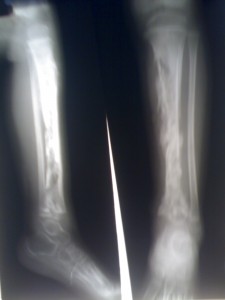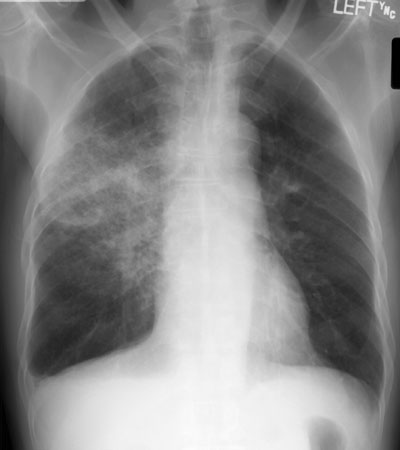Management of Osteomyelitis

How Do We Get Osteomyelitis?
Osteomyelitis is when you have an infection of the bone. It can be caused either by hematological spread that leads to sepsis of the bone, or by direct spread from an adjacent trauma wound, infected diabetic foot ulcer, decubitus ulcer, or some other ulcer that spreads to bone. Hematogenous osteomyelitis happens in 20% of the cases, mainly in kids. Direct-spread osteomyelitis happens in 80% of cases, mainly in adults. In all of these cases, bacteria seeps into the bone, and phagocytes try to fight them. Your immune system releases mediators that causes inflammation. The area over the bone becomes red, swollen, and tender.
When osteomyelitis becomes so bad that your bone starts to die, then you have chronic osteomyelitis. Here, sometimes you’ll see necrotic bone (sequestrum) surrounded by new bone that forms around it (involucrum).
Sometimes, patients may have subacute abscesses inside the bone that persist for many years before becoming full osteomyelitis. These are called Brodie Abscesses. These are difficult to diagnose since their symptoms are only subacute, but if confirmed, pathogen-specific antibiotic therapy and surgical debridement are also indicated.
Diagnosis of Osteomyelitis
Unlike pneumonia and meningitis where one should receive empiric therapy as soon as possible even before culture results, in osteomyelitis, it is important to first identify the causative pathogen before starting treatment. To diagnose osteomyelitis after suspicion with history and physical, you should do an X-ray along with ESR, CRP, WBC, Blood cultures and other supporting labs. If X-ray is positive, then proceed with bone biopsy and culture to find out the causative organism. Make sure you are culturing from the bone, and not the superficial wound, because the results from either of these do not correlate with each other.
If X-ray is normal but you still have strong suspicions of osteomyelitis, then do radiography with a more sensitive method, like MRI or bone scan. If all of these are normal, then osteomyelitis is not likely. If X-rays are positive but bone biopsy doesn’t show any positive cultures, then do the biopsy again. If it is still negative, then treat the patient empirically for both gram-positive and gram-negative organisms, since you can’t figure out what caused the osteomyelitis.
Organisms That Cause Osteomyelitis
In most people, Staph aureus is the most common cause of osteomyelitis. It grows on the skin and easily enters wounds, potentially causing sepsis leading to osteomyelitis. However, here are some other pathogens that can cause it in patients with risk factors:
- Sickle cell patients – Salmonella
- Diabetics – Pseudomonas
- Intravenous drug users – pseudomonas
- Patients who had prosthetic replacements – Staph aureus, Staph epidermidis, which both live on skin and can enter the bones via the prosthetic replacement procedure.
- Patients with TB – mycobacterium tuberculosis can cause osteomyelitis in the spine, known as Pott’s disease. It can cause compression fracture of the spine.
- Patients who had cat or dog bites or scratches – pasteurella multocida.
Treatment of Osteomyelitis
Osteomyelitis treatment often involves both antimicrobial therapy to get rid of the infection but also surgical debridement to get rid of necrotic bone, if present. Like I said before, it’s important to figure out the bug first to figure out what kind of antibiotics to give. For antimicrobial therapy, IV is given first, then after the first two weeks, most patients can switch over to oral therapy.
- Staph: ox, clox, diclox, or naf
- Gram neg: ciprofloxacin
- MRSA: vanco, linezolid
Track infection with ESR to see how long you should treat.
Like I said before, if you can’t figure out what organism is the cause of the osteomyelitis, then give empiric therapy that covers both gram-positive and gram-negative bacteria. Use IV piperacillin-tazobactam, or IV Ampicillin-sulbactam, or IV Ticarcillin-clavulanate. After 2 weeks of IV meds, most patients can be switched to oral meds: Amox-clav, Ciprofloxacin+Clinda, Levofloxacin+Clinda, or Moxifloxacin.
My references: Harrison’s Principles of Internal Medicine, MedScape, Up-to-Date, Kaplan USMLE Step 2, First Aid for USMLE Step 1, my old lecture notes from Pathology class.











